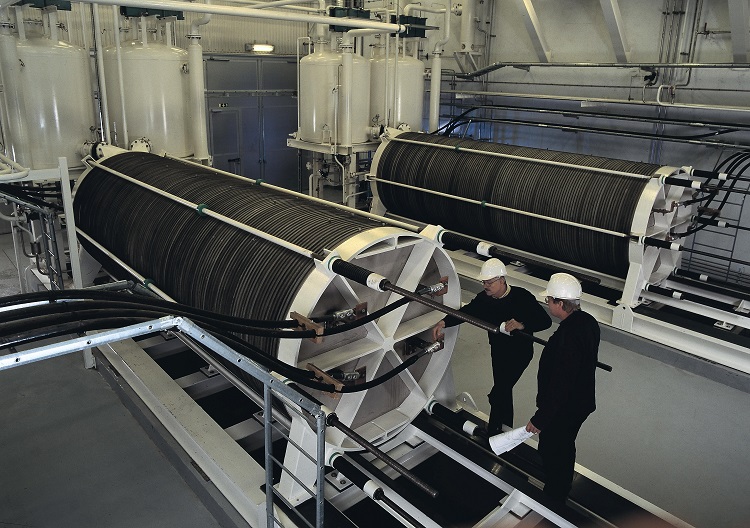Fuel cells and hydrogen will likely play an important role in the energy and transport systems of the future. Cost reductions will partly hinge on the rising deployment of fuel-cell vehicles and the introduction of supportive policies throughout the world. But the hydrogen and fuel cell industry is also moving towards the development of larger and more flexible electrolyzers, which can accommodate hydrogen produced by renewables such as solar. Bjørn Simonsen, vice president of market development and public relations for Norway’s Nel Hydrogen — and a speaker at PV Magazine’s Future PV Roundtable at Solar Power International (SPI) in September — recently talked to pv magazine about the degree in which the business case for hydrogen as an energy carrier is based on the declining cost of renewables.
You will speak at pv magazine’s Future PV Roundtable at SPI in Las Vegas about the feasibility and profitability of producing hydrogen on a large scale from PV plants. Do you have any operational projects you can tell us about?
Bjørn Simonsen: When we look at the benefits of producing hydrogen from solar, we’re primarily looking at hydrogen as a fuel. Specifically, we are engaged in California, where we are evaluating different projects. If you look at the price at which hydrogen is competitive with gasoline, it is at roughly $7 per kilo at the pump. To produce 1 kilo of hydrogen, you need roughly 50 kWh of energy, or electricity. And with the price below $50/MWh, we can make a feasible business case, including all capital investments from the production of hydrogen to the pump at the station.
Do you take electricity directly from PV plants or from the grid?
This all depends on the setup and also the grid taxes or feed-in tariffs that are available. So we’re looking at both grid-tied and off-grid systems. If you are grid-tied, you can also use electricity at nighttime, which maximizes the utilization of the electrolyzer. Or if you have a combination of wind and solar, you can use nighttime energy. But being connected to the grid also complicates things, as the tariff system that is currently in place penalizes rather than incentivizes, even though electrolyzers can be greatly beneficial for grid operation.
Find out more about Future PV
Bjørn Simonsen will share his ideas at pv magazine’s Future PV roundtable at SPI in Las Vegas, along with representatives from companies and organizations such as First Solar, Hanwha Q Cells, Strata and NREL.
Speakers at the two-hour event will present different technologies in five-minute pitches, followed by a lively discussion with the attendees and a vote to determine which presentations offer the most compelling business case.
Registration is free. For more information on the “Pushing the boundaries – the latest steps to decrease LCOE”. event, please visit the Future PV roundtable website at https://www.pv-magazine.com/future-pv/
Is the electricity cheaper when electrolyzers are installed next to PV plants, or can they simply be connected to the grid from anywhere?
We have the LCOE down to $0.03/kWh for some solar plants that are being put up. So that is the most important thing for us — what is the LCOE from this plant? And the utilization factor. So if we are below $0.05/kWh, we can make a business case that is attractive. And of course the lower we get, the better it all becomes. And for a very large-scale system, it’s really profitable.
Can you also work with power fluctuations? Can you provide demand-response services with the electrolyzers to stabilize output?
It doesn’t need to be stable at all. We have full flexibility on the operation of the electrolyzers. So cloud cover, varying weather and all that — it’s something we can handle. We have both alkaline and polymer electrolyte membrane (PEM) electrolyzers, so we’re able to capture all electricity generated by solar or wind energy. We can also provide services if the plant is grid-connected.

Are there still technical challenges to overcome?
The technology is there. Obviously there are continuous improvements on the technology, with regards to the flexibility of operation, efficiency and of course cost reductions. It’s mainly more of a cost-reduction issue now. And also market mechanisms — both with regards to incentive schemes to provide these services, and also the market for renewable hydrogen.
Which markets are you looking at throughout the world?
We have installed electrolyzers all over the world and fueling stations in eight countries across Europe. And soon we will install electrolyzers in California. With the electricity prices we have in Norway, Denmark, Iceland and also to an increasing degree in Germany, we see that we can produce hydrogen from renewables at a competitive price. Obviously not from solar everywhere — in Norway, we are much more of a hydro-based electricity system. However, we do have a lot of wind coming online. And we see that the ideal combination is both solar and wind, because then you also have electricity production at nighttime.
In Germany, for example, you have LCOEs for solar of somewhere between €0.05 and €0.06 for large-scale plants. Is that attractive in combination with electrolyzers?
Yes, if you’re at €0.05 per kWh, that’s really interesting. That’s where we can make this competitive. Obviously in Europe, where the gasoline prices are much higher than in the U.S., renewable hydrogen sold as fuel is competitive at an earlier stage, even at higher electricity prices than in the U.S.
Your business case is related to the use of hydrogen-based mobility – specifically, cars with electric motors that are powered by fuel cells. After roughly 20 years of discussion, there hasn’t been a breakthrough. At the moment the discussion seems very much focused on battery-based electric vehicles. Do you think fuel cell cars have a big future?
It has been 20 years since cars powered by hydrogen first appeared on the road. But it has been 100 years since the first battery-powered electric cars took to the road. That puts things into perspective. I believe that the developments of the last 20 years have been tremendous, but they haven’t received the media attention they deserve. It is way too early to draw conclusions on which technology will be the most important going forward. Battery technologies in the transport sector have a head start of about 2 million vehicles. There are probably 2 million battery-powered electric vehicles, while there are about 10,000 fuel-cell electric vehicles. I’m convinced that fuel cells and hydrogen will play an integral part in the future transport and energy system. And hydrogen systems are also implemented in other sorts of transport, such as heavy-duty vehicles, but also in buses, trains and ferries, for example
One of the advantages of battery-powered electric vehicles is that there are less conversion losses, and therefore the efficiency is higher.
The entire efficiency question loses importance with the energy regime we’re moving into. We’re coming from a mentality where we are used to thinking about energy as a limited resource. If you have a barrel of oil, it’s extremely important to use it efficiently. However, you can use it across several days or years. Whatever you don’t use one day, you still have it for the next day. Whereas when we look at renewables, you have to use them when they’re there. We have to look at energy with new eyes. What matters is what does it cost? It’s not necessarily all about the total efficiency. Prices are low enough to make hydrogen and distribute it to fueling stations at costs that are comparable to what we’re used to today with gasoline and diesel. If you charge your car from your rooftop solar at home, it’s obviously more efficient than converting it to hydrogen first, but you won’t see people driving their electric vehicles to a solar farm far from their homes to charge whenever it’s really nice and sunny outside. That is why the two technologies will live side by side and complement each other.
Bjørn Simonsen, Vice President Market Development & Public Relations at Nel Hydrogen, will speak about producing hydrogen to store solar energy at the Future PV Roundtable in Las Vegas. Nel Hydrogen also recently participated in the Group Exhibit Hydrogen + Fuel Cells + Batteries show at Hannover Messe. The first Hydrogen + Fuel Cells NORTH AMERICA event at SPI is set to host 40 exhibitors and partners. The show will focus on the production of hydrogen and the use of fuel-cell technologies for renewables storage.
Edits by Brian Publicover
This content is protected by copyright and may not be reused. If you want to cooperate with us and would like to reuse some of our content, please contact: editors@pv-magazine.com.



Simonsen notes that the on-road ratio of battery electric (BEV and PHEV) cars to fuel-cell ones is now 2m to 10,000, or 200:1. The network effect privileges the first mover. It’s hard to see hydrogen catching up, even if it were superior like Betamax, which lost out to VHS in the videotape standard wars. if you are old enough to remember them.
He’s right about the unimportance of efficiency compared to cost, but the pump price of hydrogen must include that of a new and very expensive delivery infrastructure. Liquid or high-pressure hydrogen is a demanding fuel. Electricity is already available everywhere, and overnight charging at home is already standard. The new charging infrastructure needed (especially superchargers for long trips) is a limited addition.
On the side of hydrogen, an LCOE electricity cost probably overstates things. With high renewables penetration, their curtailment to match grid demand rises. A flexible offtaker like a hydrogen catalysis plant can presumably get the curtailed output for next to nothing.
Maybe hydrogen can be used for winter heating.
Electric battery powered vehicles that can be charged from solar panels that are installed on the roof of a house will most likely be the vehicle of choice for those who want to save transportation cost and to help stem the global warming problem. Those who live in homes that can not take advantage of solar power can use hydrogen fuel cell cars to mitigate the global warming problem. As long as the hydrogen fuel is produced from renewable energy sources and the cost of hydrogen fuel is comparable to that of gasoline, the two technologies can both be commercially viable.
Yes the Betamax/VHS example. You might be right James. But don’t forget that we don’t use them anymore or even DVDs which came after…. and we do already have a gas network that could be repurposed, albeit not trivial.